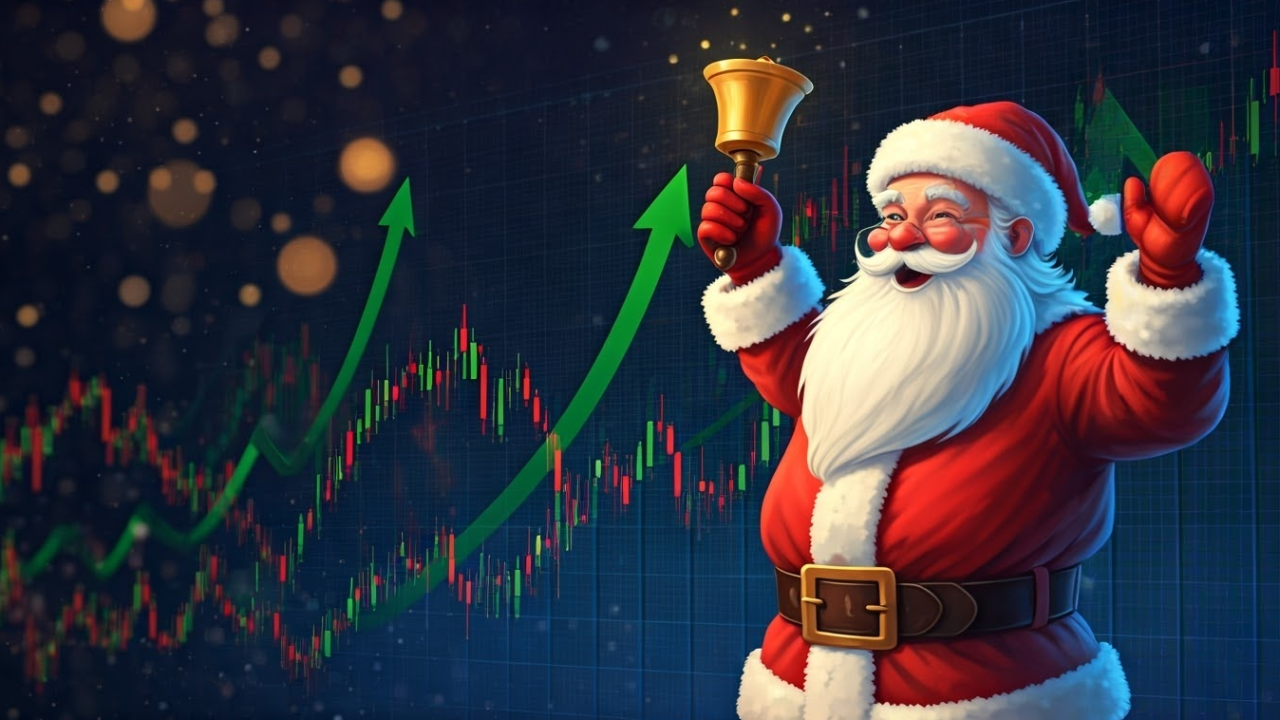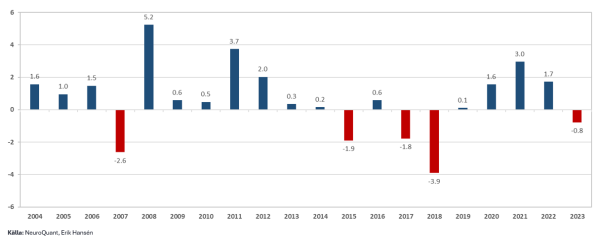Christmas rally – More myth than magic?

The Christmas rally is one of the most talked-about phenomena in the stock market – a kind of seasonal miracle where stocks are supposed to surge just in time for us to wrap our Christmas presents and uncork our New Year’s Eve champagne. But is it really the work of Santa? Or is it just a convenient fairy tale to make us feel warm and hopeful during the December darkness?
Let's take a closer look.
What exactly is the Christmas rally?
The term “Christmas rally” was introduced by Yale Hirsch in the 1972 edition of The Stock Trader's Almanac. He described the phenomenon as a tendency for the stock market to rise during the last five trading days of the year and the first two of the new year.
For those of you who are interested in seasonal patterns, I can highly recommend the book. The Stock Trader’s AlmanacA new edition is published every year. Click here to get to Bokus.
The numbers behind the story
If we look at the numbers, the average return during the Christmas rally over the past 20 years is around 0.6%. Not bad, but let's be honest – it's not exactly something to hang a Christmas star on. What's more, the return has decreased to 0.1% over the past 10 years.
Development during the “Christmas rally” on the Stockholm Stock Exchange over the past 20 years
 A myth for the investor community?
A myth for the investor community?
The truth is that the Christmas rally is likely the result of small data sets and a lot of creative interpretation. In reality, there is nothing magical about it. It is neither Santa's elves nor a secret algorithm that is driving up prices, but rather a mix of small volumes and seasonally positive sentiment.
Why do we care?
The answer is simple: it's entertaining! Talking about the Christmas rally gives us something to look forward to when the days are short and the fridge is full of gingerbread dough. It gives the media a reason to fill columns and us investors an excuse to talk about the market.
Conclusion
The Christmas rally is a bit like a Christmas movie: it's cozy and fun to talk about, but not a real investment strategy. If you really want to make money in the market, it's better to focus on robust strategies, diversification and risk management - not hoping for Santa to come with a return.


